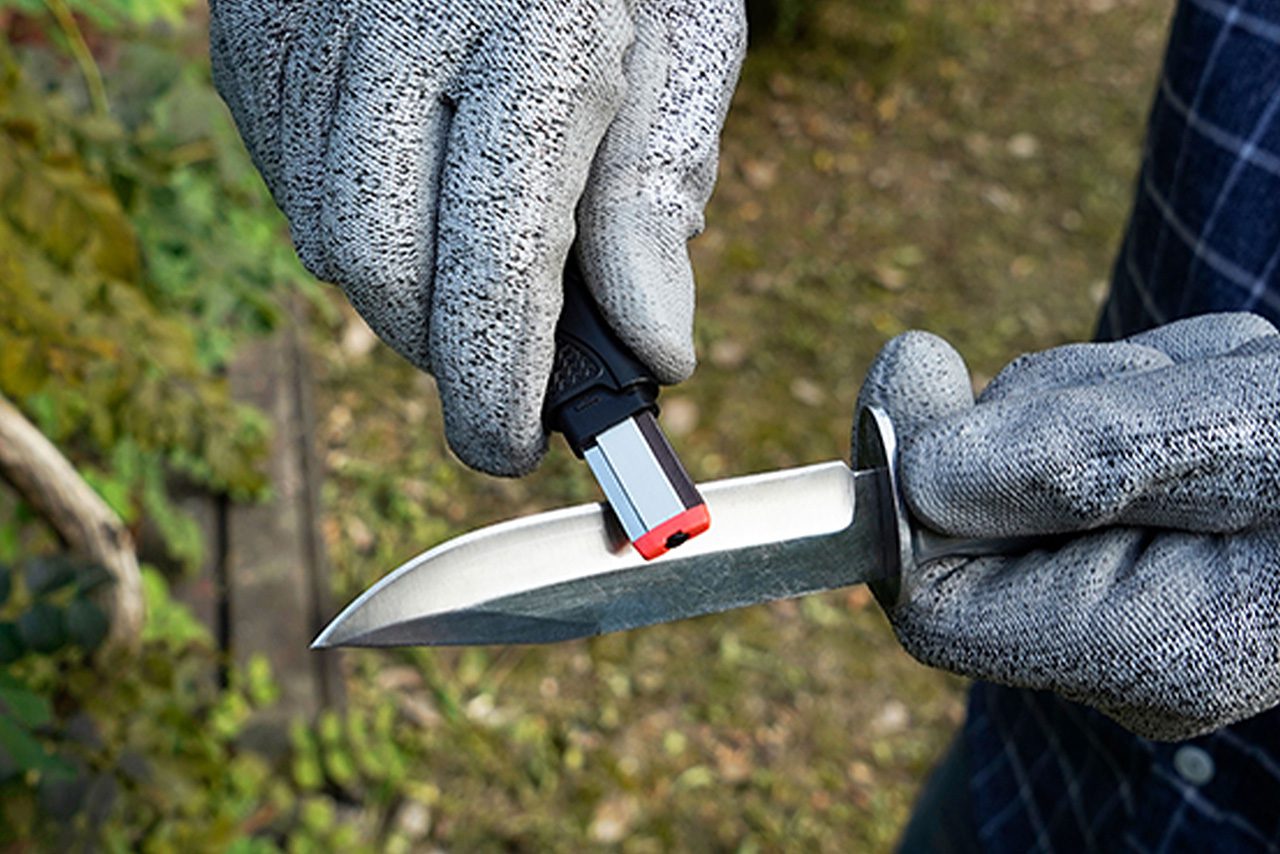A dull knife in the field isn’t just frustrating—it’s dangerous. Whether you’re skinning game, cutting rope, or prepping food at camp, a sharp knife is one of the most essential tools in any outdoor kit. Yet sharpening often gets overlooked until it’s too late.
In this guide, we’ll break down the basics of knife sharpening—from the tools you need to the right technique for keeping your edge razor-sharp. If you’re a hunter, angler, or camper, this one’s for you.
Why Sharp Knives Matter in the Outdoors
When you’re outdoors, your knife is your lifeline. Hunters use them for field dressing, anglers for cleaning fish, and campers for everything from food prep to cutting paracord. A sharp blade makes each task faster, safer, and more efficient.
A dull blade requires more pressure, increasing the chance of slips and injury. Plus, it damages the blade over time and makes precision cuts nearly impossible—something no hunter wants when preserving meat or caping a trophy.
Know Your Edge: The Basics of Blade Angles
One of the first things to understand is edge angle—the degree at which a blade is sharpened. Most hunting and outdoor knives are best sharpened at a 20-degree angle on each side. This offers the perfect balance of sharpness and durability.
- 15–17 degrees: Razor-sharp but delicate (great for kitchen knives)
- 20–22 degrees: Ideal for field knives—strong, reliable, and sharp enough for detail work
- 25+ degrees: More durable, but less sharp—best for chopping tools like hatchets or machetes
Tools You’ll Need to Get the Job Done
There are many sharpening systems out there, but they all come down to three core categories:
1. Whetstones (Sharpening Stones)
The traditional favorite. Whetstones come in various grits (just like sandpaper):
- Coarse (200–600 grit) for reshaping a damaged or very dull edge
- Medium (800–1000 grit) for general sharpening
- Fine (3000–8000 grit) for polishing and refining the edge
Pro tip: Always use water or honing oil depending on your stone type, and maintain a consistent angle throughout the motion.
2. Pull-Through Sharpeners
Quick and easy. These are great for campers and hunters who want a no-fuss tool in their pack. They usually feature preset angles and carbide or ceramic inserts.
They won’t give you a pro-level edge, but they’ll get the job done in a pinch—especially after field use.
3. Electric Sharpeners
Perfect for home use or outfitting a hunting lodge. These sharpeners are fast and effective, and many come with guides to help you maintain the right angle. Ideal for sharpening multiple knives before a big trip.
Step-by-Step: How to Sharpen Your Knife
Whether you’re using a whetstone or a guided system, the basic technique remains the same:
- Start with a clean blade – Wash and dry your knife to remove any gunk or debris.
- Choose your angle – Typically 20 degrees for hunting/camping knives.
- Work one side at a time – Use smooth, consistent strokes along the entire edge.
- Alternate sides – After several passes on one side, flip and repeat.
- Finish with a strop or fine grit – This final step polishes the edge and removes burrs.
- Test the edge – Carefully test by slicing paper or shaving a thin layer from a stick.
Knife Maintenance Tips for the Field
- Always dry your blade after use to prevent rust, especially if used around water or blood.
- Carry a pocket sharpener or pull-through tool in your hunting pack for quick touch-ups.
- Store knives in a sheath or blade cover to protect the edge and your gear.
Why Brands Should Care About the Edge
Knife sharpening might seem like a niche skill, but for hunters, anglers, and campers—it’s a non-negotiable. Outdoor brands that educate their customers on proper blade maintenance build trust and long-term loyalty.
At Kelly Brand Management, we help outdoor lifestyle brands communicate clearly and effectively with their customers—from product packaging to content that educates and converts. Whether you sell field knives, sharpeners, or survival tools, we can help you position your products where they belong: in the hands of the people who rely on them.
Final Word
A sharp knife doesn’t just make tasks easier—it keeps you safe, efficient, and ready for whatever the wild throws at you. If you’re serious about hunting or camping, sharpening should be part of your routine—not an afterthought.
Need help telling your brand’s story to the outdoor audience? Contact Kelly Brand Management and let’s sharpen your marketing game.


 Previous Article
Previous Article